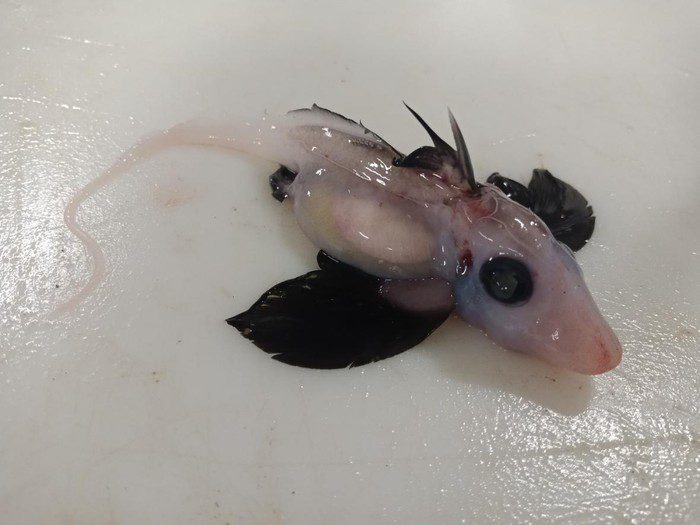This article highlights 10 bizarre animals that exist in the world today, each with unique features and abilities. The axolotl, a type of salamander, has the ability to regrow limbs, spinal cords, and even parts of its brain. The platypus is a mammal that lays eggs, making it one of only a few species of mammal that do so. The aye-aye, a type of lemur, has a creepy, bony knob on its third finger which it uses to tap on trees to locate insects. The pangolin’s scales provide excellent protection against predators, and the star-nosed mole has thousands of tiny sensory receptors in its star-shaped nose. The vampire bat feeds on blood and the narwhal has a long, spiral tusk. The Surinam toad has a unique breeding behavior where the female lays her eggs on the male’s back, and the giant clam is one of the largest animals in the world. Finally, the hummingbird hawk-moth is a type of moth with unbelievable flight skills and the ability to feed on nectar from flowers while in flight.
1. The Axolotl’s Incredible Regeneration Abilities
The axolotl is a type of salamander that is native to Mexico. It is famous for its incredible regenerative abilities, which allow it to regrow limbs, spinal cords, and even parts of its brain. Scientists have been studying these animals for years in order to better understand how their regenerative powers work, and there is still much to learn about these fascinating creatures.
2. The Platypus: A Mammal That Lays Eggs
The platypus is one of the most unusual animals in the world, with its unique combination of features that include a bill like a duck’s, a tail like a beaver’s, and webbed feet like an otter’s. But perhaps the most bizarre thing about the platypus is that it is a mammal that lays eggs instead of giving birth to live young. This makes the platypus one of only a few species of mammal that are egg-laying.
3. The Aye-Aye’s Creepy Finger
The aye-aye is a type of lemur that lives in Madagascar. These animals are unusual in many ways, including their long, thin fingers, which they use to hunt for insects. But the most bizarre thing about the aye-aye is its third finger, which is much longer than the others and has a creepy, bony knob on the end. This finger is used to tap on trees in order to locate insects, and it is also believed to have some sort of sensory function.
4. The Pangolin’s Protective Scales
The pangolin is a type of mammal that is covered in scales. These scales are made of keratin, the same substance that makes up human hair and nails. But unlike human hair and nails, the pangolin’s scales are incredibly tough and provide excellent protection against predators. In fact, when threatened, the pangolin will curl up into a ball, using its scales to shield itself from harm.
5. The Star-Nosed Mole’s Bizarre Nose
The star-nosed mole is a small, burrowing mammal that is found in parts of North America. It is named for the star-shaped arrangement of fleshy tentacles on its nose, which it uses to sense its environment. These tentacles contain thousands of tiny sensory receptors, making the star-nosed mole one of the most sensitive animals in the world.
6. The Vampire Bat’s Bloodthirsty Diet
The vampire bat is one of the few species of bat that feeds on blood. These bats are found in Central and South America, where they drink the blood of birds and other animals. Although their bite is not harmful to humans, vampire bats are still feared by many people due to their association with vampires in popular culture.
7. The Narwhal’s Unicorn-Like Tusk
The narwhal is a type of whale that is known for its long, spiral tusk. This tusk can grow up to 10 feet long and is actually a tooth that protrudes from the animal’s upper lip. Although scientists are still not entirely sure why narwhals have tusks, some believe that they may use them to help them navigate through the icy waters of the Arctic.
8. The Surinam Toad’s Bizarre Breeding Habits
The Surinam toad is a type of frog that is found in South America. These animals have a unique breeding behavior in which the female lays her eggs on the male’s back, where they are absorbed into his skin. The eggs then develop into tadpoles, which eventually emerge fully formed from the male’s back.
9. The Giant Clam’s Massive Size
The giant clam is one of the largest animals in the world, with some species growing up to 4 feet across and weighing more than 500 pounds. These clams are found in the coral reefs of the Pacific and Indian oceans, where they use their massive size to filter large amounts of water for food.
10. The Hummingbird Hawk-Moth’s Incredible Flight Skills
The hummingbird hawk-moth is a type of moth that is found throughout Europe and Asia. These insects have incredible flight skills, hovering in place like a hummingbird and even flying backwards. They are also able to feed on nectar from flowers while in flight, making them one of the most agile insects in the world.
